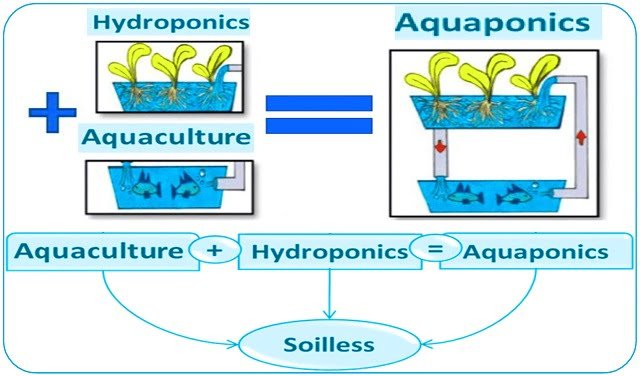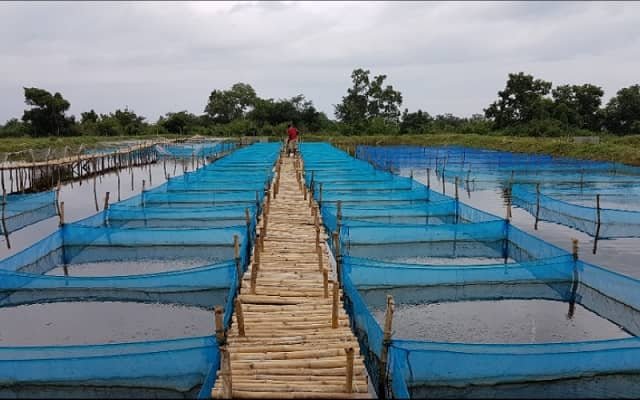
Shrimp aquaculture faces growing pressure: the need to increase production to meet global demand while simultaneously mitigating its environmental impact. Traditional practices, often dependent on high water exchange rates and intensive resource use, have raised concerns about environmental degradation and pollution. In this context, biofloc technology (BFT) emerges as an innovative and self-sustaining solution that promises to redefine the future of the sector.
A recent and exhaustive scientific analysis published in the Journal of Agriculture and Food Research by researchers from Universiti Malaysia Terengganu, Joseph Sarwuan Tarka University, Serandu Aquaponic System SDN, the Nigerian Stored Products Research Institute, and Universiti Kebangsaan Malaysia, synthesizes the current state of BFT, exploring its practices, the obstacles to its adoption, and the perspectives that establish it as a key tool for food security and sustainability. This article breaks down the findings of that research to offer a clear and practical vision for professionals in the sector.
What is biofloc technology and what is its fundamental principle?
Biofloc technology is a cultivation system that transforms waste generated on the farm itself, such as uneaten feed and feces, into a natural and nutritious food source for shrimp. It achieves this by creating a self-sustaining ecosystem where microbial communities convert this waste into biomass (the biofloc), which in turn maintains water quality and reduces dependence on external feeds.
The cornerstone of its operation is the management of the carbon-to-nitrogen (C:N) ratio. By adding an external carbon source (like molasses or starch), the growth of heterotrophic bacteria is stimulated. These bacteria consume toxic nitrogenous compounds (such as ammonia and nitrite) to produce microbial protein, cleaning the water and generating a high-quality food source available 24/7 for the shrimp.
Proven benefits of BFT in shrimp production
The research confirms that adopting BFT is not just an ecological decision, but also a profitable strategy with multiple operational advantages.
- Improved performance and feed efficiency: Numerous studies show that shrimp raised in BFT systems exhibit better growth rates, a lower feed conversion ratio (FCR), and higher feed conversion efficiency (FCE). The biofloc acts as a constant nutritional supplement, rich in proteins, vitamins, and essential fatty acids.
- Water quality and environmental sustainability: By recycling nutrients, BFT operates with minimal or no water exchange (“zero water exchange”). This not only conserves a vital resource like water but also drastically reduces the discharge of nutrient-rich effluents into the environment, minimizing the risk of eutrophication.
- Biosecurity and disease control: The reduction in water exchange significantly limits the entry of external pathogens into the farm, making BFT an inherently more biosecure system. Furthermore, it has been reported that the consumption of biofloc, which contains probiotics and immunostimulatory compounds, improves the shrimp’s immune response and its resistance to diseases.
The challenges slowing its large-scale adoption
Despite its clear benefits, the transition to BFT is not without obstacles. The report identifies three main areas of challenges: technical, biological, and economic.
- Technical: The main technical challenge is the high energy consumption required to maintain constant aeration, which keeps the floc suspended and ensures adequate oxygen levels. This energy cost can account for over 30% of production costs. Additionally, the precise management of microbial dynamics and water quality requires technical knowledge that is not always within reach for all producers.
- Biological: BFT systems, being nutrient-rich and operating at high densities, can be vulnerable to outbreaks of opportunistic pathogens, such as Vibrio species. The quality and composition of the biofloc can vary depending on the carbon source and management, which directly impacts the shrimp’s health and growth.
- Economic: The initial investment cost in infrastructure (tanks, aeration systems, monitoring equipment) is a significant barrier, especially for small-scale producers. Added to this is consumer perception and market acceptance, where a lack of knowledge about shrimp produced with BFT can create skepticism.
Current practices and the promising future of the technology
Countries like China, Brazil, India, Turkey, and Israel are at the forefront, developing and implementing innovative solutions to overcome these challenges. The research focuses on:
- Alternative and low-cost carbon sources: The use of agricultural byproducts (such as sugarcane bagasse or coconut husk), biochar, and microalgae is being explored to reduce dependence on expensive inputs like molasses.
- Automation and advanced technologies: The integration of Internet of Things (IoT) technologies and machine learning allows for real-time water quality monitoring and automated feed optimization, improving efficiency and reducing costs.
- Supportive policies and training: The long-term success of BFT will depend on the creation of government policies that incentivize its adoption (through subsidies or tax breaks) and robust training programs that equip producers with the skills for technical system management.
Conclusion
Biofloc technology is no longer a distant promise but a proven reality that offers a viable path toward a more productive, profitable, and, above all, sustainable shrimp aquaculture. While challenges related to costs, technical management, and market acceptance persist, research and technological innovation are advancing at an accelerated pace to overcome them.
Stay Always Informed
Join our communities to instantly receive the most important news, reports, and analysis from the aquaculture industry.
For aquaculture producers, adopting BFT represents an opportunity to improve efficiency, reduce environmental impact, and strengthen the biosecurity of their operations. For the sector as a whole, it is a fundamental piece in building an aquaculture industry that can meet future demand in a responsible and resilient manner.
Contact
Nor Azman Kasan
Higher Institution Centre of Excellence (HICoE), Institute of Tropical Aquaculture and Fisheries (AKUATROP), Universiti Malaysia Terengganu
Kuala Nerus, 21030, Terengganu, Malaysia
Email: norazman@umt.edu.my
Reference (open access)
Iber, B. T., Ikyo, B. C., Nor, M. N. M., Abdullah, S. R. S., Shafie, M. S. B., Manan, H., Abdullah, M. I., & Kasan, N. A. (2025). Application of Biofloc technology in shrimp aquaculture: A review on current practices, challenges, and future perspectives. Journal of Agriculture and Food Research, 19, 101675. https://doi.org/10.1016/j.jafr.2025.101675
Editor at the digital magazine AquaHoy. He holds a degree in Aquaculture Biology from the National University of Santa (UNS) and a Master’s degree in Science and Innovation Management from the Polytechnic University of Valencia, with postgraduate diplomas in Business Innovation and Innovation Management. He possesses extensive experience in the aquaculture and fisheries sector, having led the Fisheries Innovation Unit of the National Program for Innovation in Fisheries and Aquaculture (PNIPA). He has served as a senior consultant in technology watch, an innovation project formulator and advisor, and a lecturer at UNS. He is a member of the Peruvian College of Biologists and was recognized by the World Aquaculture Society (WAS) in 2016 for his contribution to aquaculture.




